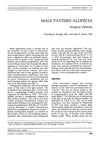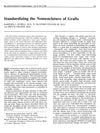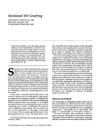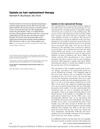TLDR Elliptografting gives better hair appearance and satisfaction than other methods.
The study introduced a new recipient graft device called the elliptograft and compared it to standard circular minigrafts and laser-generated slot grafts in a blinded study involving 30 patients with androgenetic alopecia. The patients were divided into three groups, each receiving a different grafting technique. The results showed that all three methods achieved comparable hair growth density, although healing time was slightly longer for the laser transplant group. However, the elliptograft technique was judged to provide superior aesthetic improvement and correlated with high patient satisfaction. The study concluded that the elliptograft punch produced excellent hair density and patient satisfaction.
 2 citations
,
October 1997 in “Dermatologic Clinics”
2 citations
,
October 1997 in “Dermatologic Clinics” The document concludes that advancements in hair restoration surgery have led to more natural results and patient satisfaction, with hope for future improvements in treatment.
 2 citations
,
September 1996 in “The American Journal of Cosmetic Surgery”
2 citations
,
September 1996 in “The American Journal of Cosmetic Surgery” The authors suggest using a standard system to name hair grafts to improve communication in hair restoration.
 33 citations
,
January 1991 in “The Journal of Dermatologic Surgery and Oncology”
33 citations
,
January 1991 in “The Journal of Dermatologic Surgery and Oncology” Incisional slit grafting for hair transplantation gives natural-looking results and has a high success rate.
 3 citations
,
August 2002 in “Current Opinion in Otolaryngology & Head and Neck Surgery”
3 citations
,
August 2002 in “Current Opinion in Otolaryngology & Head and Neck Surgery” Hair transplantation, especially follicular unit micrografting, was the top treatment for male pattern baldness, with a focus on natural results and ongoing improvements in both surgical and medical management.
 15 citations
,
December 2007 in “Dermatologic Therapy”
15 citations
,
December 2007 in “Dermatologic Therapy” Hair transplantation has improved with techniques that increase graft survival and patient satisfaction for more natural results.




